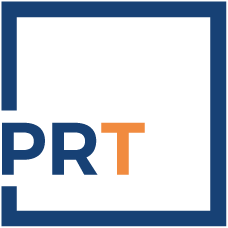We have seen this during other periods of economic uncertainty: Businesses and consumers react, and those reactions have rippling effects. Marketing strategies are being altered and advertising budgets are being slashed. While it can be argued that this is a short-sighted strategy during an economic downturn, when coupled with a global pandemic, this response is a bit more understandable.
Consumers have reacted by shifting their focus more toward information than commercialism. They are engrossed in the latest news and updates, which may affect their well-being. The volume of news content being published, as well as the consumption of news media, has spiked. This is where the eyeballs are — this is where the attention is.
The role of public relations is to positively place a brand into news stories. That is why PR is the one function within the marketing organization that is positioned to step up, take a leadership position and have the greatest impact on company reputation during this period.
Earned media, specifically, is already the most trusted form of marketing. Somewhat paradoxically, it is also the most cost-effective. There is simply no better instrument during a widespread crisis than communications.
People need more right now. They need to be educated, entertained and enlightened. People need great stories. We are operating in a world of narrative economics, and this is at the heart of the communications function: identifying the compelling idea, crafting the narrative and finding the right partner to tell the story with.
But the world of media has changed dramatically in the last decade. Managing your company’s reputation through a global crisis is different and harder than it was during the financial crisis of 2008. There are significantly more authors, bloggers and influencers contributing to many more media outlets than existed before.
Monitoring the media for trending topics, terms and themes has become as much of a scientific exercise as a marketing exercise. Nuanced shifts in the financial markets, healthcare system, and energy and regulatory industries can have dramatic impacts on news cycles. We see certain terms enter the media and quickly dominate the conversation. Then they just as suddenly fade away, only to be replaced by the sound bite du jour.
Today’s communications team is expected to not only keep track of these shifts, but to dynamically synthesize and contextualize them in a way that their company can take appropriate action. The modern communicator is not just a great storyteller. They need to understand data: how to organize it, how to read it, how to interpret it. And since things are changing day by day, hour by hour, minute by minute, information needs to be available quickly and on an ongoing basis.
With the right perspective and the ability to adjust your communications strategy based on these real-time trends, you can both protect your brand during pivotal moments and find ways to reassure your constituents of your company’s key values. Understanding the news is the first step toward shaping it.
Here are two practical examples of using real-time data to react and pivot to media trends.
The first example is similar to how equity traders monitor portfolios of stocks in real time in an effort to detect the slightest change in the wind, and upon noticing certain ticker symbols rising (or falling) at a faster rate than their cohort, they rebalance their investments to take advantage of these shifts. Specifically, if they see a certain stock accelerating, they may try to increase their weight in that stock early enough to get ahead of the big climb-up and capture some gains.
The analogy to communications is in the way that certain themes, stories and soundbites rise and fall in media popularity. Monitor those trends by tracking the number of mentions each sound bite gets in the media every day. How many articles are certain keywords appearing in, and is the volume of those keyword mentions increasing dramatically? It’s tough to predict the future, but if you plot these trends on a graph over time you may be able to get ahead of the curve and establish early ownership of a key idea in the news by pitching the publications and journalists who are just beginning to cover the topic. If you can insert your brand into those conversations early enough, you can create incredible earned media exposure as the volume of those stories grows.
The second example of using real-time media insights to adapt is to closely monitor the ways your competition is being mentioned in the news and optimizing your own communication strategy accordingly. If, for example, there is an early signal that a competitor is gaining traction around a specific conversation in the news and your brand has something equally or more compelling to add to that conversation, you can act quickly to insert your story into the media that is most relevant, thus hijacking the story and drowning out the competition. Conversely, if you quickly detect that a competitive tactic is backfiring based on negative sentiment, then you can incorporate this learning into your own efforts by avoiding a similar tactic.
In this current state of crisis-induced uncertainty, we are likely to see a lot of opportunities if we just look for them. That is why this information is so important right now. And while further pull-backs in general marketing and advertising expenditures are to be expected, there are very few crisis situations where less communication is better. It is almost always the case that more communication, and more well-informed communication, is the best strategy.






